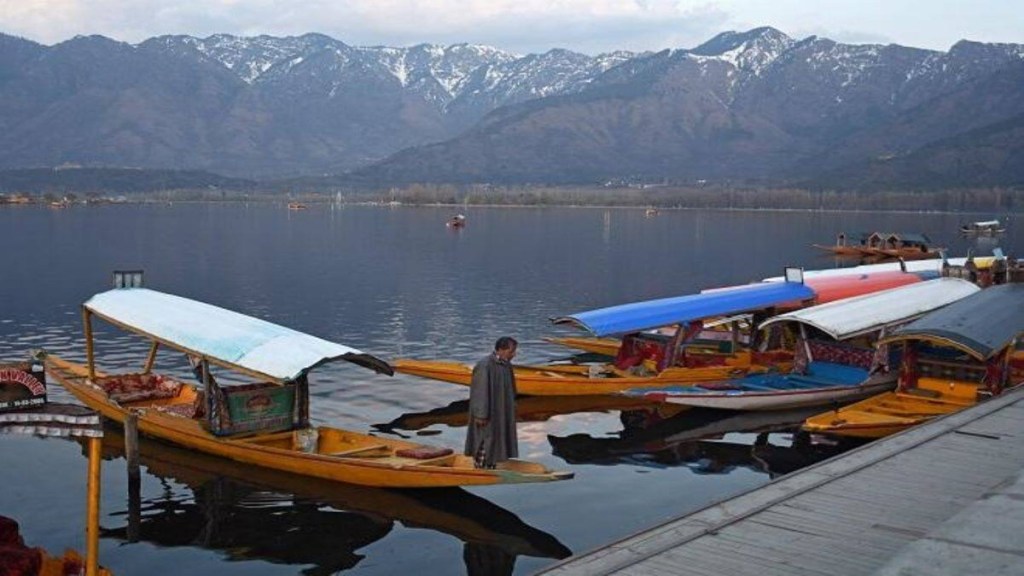By Farooq Wani
Articles 370 and 35-A of the Indian Constitution precluded the extension of people-centric welfare schemes launched by the centre in the erstwhile state of J&K. Hence, while people all over India were benefiting from these schemes, the people of J&K were deprived of the same. That’s why in just four years after the abrogation of these discriminatory articles, the union territories (UT) of J&K and Ladakh have witnessed unprecedented development and infrastructural growth.
It’s no brainer that peace and stability are building blocks and key drivers for socio-economic progress. Unfortunately, there was a time not too long ago when J&K was tragically engulfed in terrorism sponsored by Pakistan and experienced frequent shutdowns orchestrated by the pro-Pakistan lobby. The situation was worsened by politicians pursuing their own self-serving agendas and an administration which was both inefficient and corrupt.
All of this had a telling adverse impact on the tourism sector, which has been the backbone of Kashmir’s economy and had a cascading effect on various associated enterprises. Besides tourism, violence and frequent shutdowns also discouraged investment and education suffered a great deal. Kashmiris were literally denied the right of freedom to live peaceful lives and the right of access to basic social and economic benefits available to people living in other parts of India.
However, things have changed for the better since August 2019. The end of Articles 370 and 35A saw a conscientious, mission-based and inclusive effort by the Centre and UT administration to improve development parameters, citizen welfare-oriented policies and regional governance.
The focus has been on building new infrastructure and introducing new amenities to further bolster to existing ones. The new development paradigm based on Prime Minister Narendra Modi’s vision of “Sabka Saath, Sabka Vikas, Sabka Vishwas and Sabka Prayas” (Everyone’s contribution, everyone’s progress, everyone’s faith and everyone’s endeavour) has facilitated faster, comprehensive and inclusive economic development.
The results are encouraging. According to one estimate, more than 770,000 young Kashmiris have reportedly benefited from the UT administration’s self-employment and entrepreneurial training schemes. In fiscal 2022-23, nearly 252 projects and development works were completed per day. The number of infrastructural projects completed during a financial year rose from 9,229 in 2018 to over 92,560 in 2022-23, with approximately the same capital expenditure.
Data reveals that over Rs.1.50 lakh crores was allotted to the building of new roads across J&K. Post-Covid-19, healthcare has been prioritised. The UT today has two All India Institutes of Medical Sciences (AIIMS), seven new medical colleges, two state-run cancer institutes, 3,000 health and wellness centres and several nursing colleges. The local administration has also introduced universal health insurance for all families under the PMJAY-SEHAT Scheme.
Since 2021, there has been an exponential rise in hotel construction and an increase in paying-guest accommodations. Tourist infrastructure is also getting renovated. To reduce congestion in popular tourist areas with the aim of offering domestic and foreign tourists a wide array of experiences, the administration is developing 75 new destinations, 75 Sufi and other religious sites, 75 new cultural and heritage sites and 75 new trekking tracks. This is part of the UT’s “Tourist Mission” initiative and will provide sustenance to many.
Massive infrastructure projects are also being readied and operationalised. Indian Railways has speeded up the process of connecting the Kashmir Valley with the rest of India. So far, railway lines have been operationalised between Jammu-Udhampur-Katra in Jammu region and Baramulla-Banihal in the Kashmir Valley. It includes the construction of the world’s tallest railway bridge across the Chenab River.
Work on Zojila Tunnel, which is Asia’s longest tunnel and will ensure all-weather connectivity between Kashmir and Ladakh, is in progress on a war footing and so far, over 35 percent of the work on the main tunnel has been completed. The construction agency is hopeful of completing the project by 2026. Once completed, this engineering marvel will be the first of its kind in such a challenging geographical terrain.
Operationalising railway lines, new road and power projects will enhance connectivity with the rest of India and the world outside which will vastly improve the economy of J&K. The UT has witnessed tax revenue growth of 31 percent. In Fiscal 2022-23, J&K’s GSDP grew at eight percent at constant prices, as against seven percent at the national level.
As a digital-friendly society, J&K has been making impressive strides, bringing 450-plus public services online. In the tourism sector, which is the mainstay of the region’s economy, at least 300 new destinations are being developed and tourist footfalls in 2023 are expected to surpass the count of 18.8 million tourists recorded in 2022.
Kashmiri women too have been empowered and out of 95,324 self-help groups (SHGs), 59,697 are run by women and there are now 600,000 rural women entrepreneurs and this number will only increase with passage of time.
The regional administration’s Janbhagidari Scheme is at the centre of the development matrix. Land to the landless, delivering social justice and equality to the oppressed and the return of cinema to the Kashmir Valley after three decades (people are now excitedly thronging new theatres in one time terrorist hotbeds like Pulwama, Shopian, Baramulla, Kupwara and Kishtwar)), surely projects all-round improvement.
The Kashmir Valley hosting a G20 tourism event successfully earlier this year has reaffirmed that despite desperate attempts by Pakistan and its proxies to create unrest, the prevailing peace and stability is here to stay.
The author is Editor Brighter Kashmir, Author, TV commentator, political analyst and columnist. Email: farooqwani61@yahoo.co.in
Disclaimer: Views expressed are personal and do not reflect the official position or policy of Financial Express Online. Reproducing this content without permission is prohibited.


